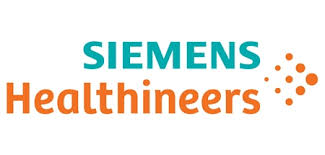- To increase access to world-class radiography training in underserved countries worldwide
- To build capacity to address the critical shortage of radiographers in low-resource settings
- To create a vendor-neutral training curriculum to serve specific local needs
Siemens Healthineers and the American Society of Radiologic Technologists (ASRT) will expand an existing partnership to bring top-quality training for radiologic technologists, or radiographers, to underserved countries around the world for the first time. Educating radiographers to operate imaging or radiation therapy equipment is crucial, as the machines enable physicians to diagnose and treat diseases including cancer and cardiovascular disease. Such noncommunicable diseases1 already account for 74% of all deaths globally, with more than three-quarters in low- and middle-income countries.
The multiyear partnership will make ASRT’s curriculum and educational content, which are regarded as an industry gold standard, available for foundational and advanced training in both in-person and virtual forms. Training will be vendor-neutral for as broad an impact as possible. ASRT, founded more than 100 years ago, is the largest association for medical imaging and radiation therapy professionals in the world. Siemens Healthineers, which has activities in more than 180 countries, will bring local know-how so that content can be tailored to local circumstances or requirements. This builds on an existing 30-year partnership which included Siemens Healthineers as a charter partner of the ASRT Foundation Corporate Roundtable and supporter of a clinical advancement scholarship program. One of the first activities under the extended partnership, will be to jointly develop a curriculum to train 50 radiographers from Ukraine. The training will be delivered in hybrid form—in person at the Siemens Healthineers Academy in Poland and online over the next two years.
“Too often in low-resource countries, medical equipment sits unused—often still in its original packaging— because no one is trained to use it,” said Hagen Weissapfel, head of Education and Service, Siemens Healthineers Access to Care. “We recognize that skilled people are the backbone of any healthcare system, and that building workforce capacity is key.”
Workforce shortages affect healthcare systems across the world, but scarcity in low- and middle-income countries is severe. In high-income countries there are 93 radiologists per million people, but Sub-Saharan Africa has only two per million, according to the International Atomic Energy Agency.2 Building capacity is crucial, and Siemens Healthineers is committed to providing six million hours of training by 2030 as part of new sustainability targets announced last November.
“ASRT’s mission is to advance and elevate the medical imaging and radiation therapy profession and to enhance the quality and safety of patient care,” said Melissa Culp, head of Member Engagement at ASRT. “With our colleagues at Siemens Healthineers, we are raising awareness of the profession, ensuring high standards of educational preparedness and strengthening the workforce pipeline globally.”
Reference
1. Noncommunicable diseases [Internet]. Who.int. [cited 2025 Jan 17]. Available from: https://www.who.int/news-room/fact-sheets/detail/noncommunicable-diseases
2. Human health campus – database & statistics [Internet]. Iaea.org. [cited 2025 Jan 17]. Available from: https://humanhealth.iaea.org/HHW/DBStatistics/IMAGINEMaps7.html

















